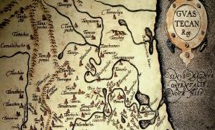Appellation
Canonical URL http://www.cidoc-crm.org/cidoc-crm/E41_Appellation
Appellation
Appellation
Benennung
Designação
Opis
Ονομασία
Обозначение
称号
This class comprises signs, either meaningful or not, or arrangements of signs following a specific syntax, that are used or can be used to refer to and identify a specific instance of some class or category within a certain context. Instances of E41 Appellation do not identify things by their meaning, even if they happen to have one, but instead by convention, tradition, or agreement. Instances of E41 Appellation are cultural constructs; as such, they have a context, a history, and a use in time and space by some group of users. A given instance of E41 Appellation can have alternative forms, i.e., other instances of E41 Appellation that are always regarded as equivalent independent from the thing it denotes. Specific subclasses of E41 Appellation should be used when instances of E41 Appellation of a characteristic form are used for particular objects. Instances of E49 Time Appellation, for example, which take the form of instances of E50 Date, can be easily recognised. E41 Appellation should not be confused with the act of naming something. Cf. E15 Identifier Assignment
| Property | Expected type | Definition |
|---|---|---|
| P139_has_alternative_form |
E41_Appellation
|
This property establishes a relationship of equivalence between two instances of E41 Appellation independent from any item identified by them. It is a dynamic asymmetric relationship, where the range expresses the derivative, if such a direction can be established. Otherwise, the relationship is symmetric. The relationship is not transitive. The equivalence applies to all cases of use of an instance of E41 Appellation. Multiple names assigned to an object, which are not equivalent for all things identified with a specific instance of E41 Appellation, should be modelled as repeated values of P1 is identified by (identifies). P139.1 has type allows the type of derivation, such as “transliteration from Latin 1 to ASCII” be refined.. |
| P1i_identifies |
E1_CRM_Entity
|
|
| Property | On types | Definition |
| P139_has_alternative_form |
E41_Appellation
|
This property establishes a relationship of equivalence between two instances of E41 Appellation independent from any item identified by them. It is a dynamic asymmetric relationship, where the range expresses the derivative, if such a direction can be established. Otherwise, the relationship is symmetric. The relationship is not transitive.
The equivalence applies to all cases of use of an instance of E41 Appellation. Multiple names assigned to an object, which are not equivalent for all things identified with a specific instance of E41 Appellation, should be modelled as repeated values of P1 is identified by (identifies).
P139.1 has type allows the type of derivation, such as “transliteration from Latin 1 to ASCII” be refined..
|
| P1_is_identified_by |
E1_CRM_Entity
|
This property describes the naming or identification of any real world item by a name or any other identifier.
This property is intended for identifiers in general use, which form part of the world the model intends to describe, and not merely for internal database identifiers which are specific to a technical system, unless these latter also have a more general use outside the technical context. This property includes in particular identification by mathematical expressions such as coordinate systems used for the identification of instances of E53 Place. The property does not reveal anything about when, where and by whom this identifier was used. A more detailed representation can be made using the fully developed (i.e. indirect) path through E15 Identifier Assignment.
|
| predicate | object |
|---|---|
| comment |
"This class comprises signs, either meaningful or not, or arrangements of signs following a specific syntax, that are used or can be used to refer to and identify a specific instance of some class or category within a certain context.
Instances of E41 Appellation do not identify things by their meaning, even if they happen to have one, but instead by convention, tradition, or agreement. Instances of E41 Appellation are cultural constructs; as such, they have a context, a history, and a use in time and space by some group of users. A given instance of E41 Appellation can have alternative forms, i.e., other instances of E41 Appellation that are always regarded as equivalent independent from the thing it denotes.
Specific subclasses of E41 Appellation should be used when instances of E41 Appellation of a characteristic form are used for particular objects. Instances of E49 Time Appellation, for example, which take the form of instances of E50 Date, can be easily recognised.
E41 Appellation should not be confused with the act of naming something. Cf. E15 Identifier Assignment
"@en
|
| label |
"Appellation"@en
"Appellation"@fr "Benennung"@de "Designação"@pt "Opis"@pl "Ονομασία"@el "Обозначение"@ru "称号"@zh |
| type |
owl:Class
|
| subClassOf |
E90_Symbolic_Object
|

